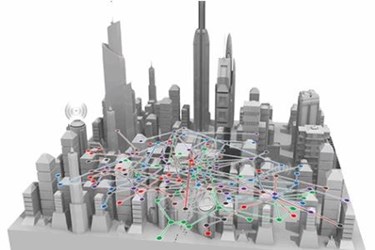DARPA's Spectrum Collaboration Challenge Calls For Contenders

$2M will go to the team whose machine-learning radio system is best at collaborating with other contenders to expand the spectrum’s signal-carrying capacity
DARPA officials first publicly floated plans for the Spectrum Collaboration Challenge, an initiative designed to ensure that the exponentially growing number of military and civilian wireless devices will have full access to the increasingly crowded electromagnetic spectrum. Recently, with the Agency release of detailed postings about the competition’s architecture, rules, and two participation options for seeking one of the up to 30 available slots, SC2 is officially on.
The competition will unfold in three year-long phases beginning in 2017 and finishing, for those teams that survive the two Preliminary Events, in a high-profile Championship Event in late 2019. The team whose advanced, software-defined radios collaborate most effectively with a diversity of simultaneously operating radios in a manner that optimizes spectrum usage for the entire communicating ensemble will walk away with a grand prize of $2M. The teams that rank as the second and third best collaborators will take home $1M and $750,000, respectively.
By rewarding teams for developing smart systems that collaboratively and autonomously adapt in real time to today’s dynamic and congested spectrum environment, Paul Tilghman, program manager for SC2, and his team in DARPA’s Microsystems Technology Office hope to redefine conventional, rigid spectrum management paradigms in favor of more efficient and fluid machine-driven approaches. “We want to radically accelerate the development of machine-learning technologies and strategies that will allow on-the-fly sharing of spectrum at machine timescales,” said Tilghman.
This new DARPA challenge, which champions a spectrum-sharing model for RF communications, comes at a time of fast-growing demand, which could soon overwhelm the current, nearly century-old practice of assigning users exclusive use of specific frequencies. Military operations increasingly rely on access to the wireless spectrum to assess the tactical environment and coordinate critical missions. And as society enters an era in which ever more products—from refrigerators to automobiles to unmanned aerial vehicles—need access to the spectrum, it will take far more efficient and nimble use of finite spectrum resources to meet the demand.
As specified in the Broad Agency Announcement (DARPA-BAA-16-47) posted today on fbo.gov, the SC2 offers two tracks for potential participants. In the Proposal Track, successful candidates will enter directly into a funded contract with DARPA. In the Open Track option, DARPA welcomes all manner of potential participants—especially those who have not previously worked with DARPA—from commercial companies to startups and from universities to hackers in a garage. To secure their slots in SC2, open-track teams will have to pass entrance hurdles demonstrating their prowess in software-defined radio (an RF technology that provides the necessary agility in changing waveforms) and artificial intelligence techniques (for autonomously discerning the dynamic spectrum environment and optimizing how users share it). Participants in both tracks will be treated identically during the competition and will vie for the same final prize purse.
A second BAA (DARPA-BAA-16-48) posted today details the architectural needs for the competition, including the scoring methodology, scenario development for testing competitors’ collaborative strategies and tactics, and means for assuring the integrity of the competition and keeping it free from tampering or other kinds of malfeasance. The Rules Document, available on the just-launched competition website, www.SpectrumCollaborationChallenge.com, serves as a compact guide for the challenge and all potential participants. Also posted on fbo.gov today is a Special Notice with details about Competitor Information and Proposers Days to be held in August at DARPA headquarters in Arlington, VA, for those considering participating in SC2 as a competition contender and/or to help innovate solutions associated with the competition’s architectural needs.
Source: DARPA
